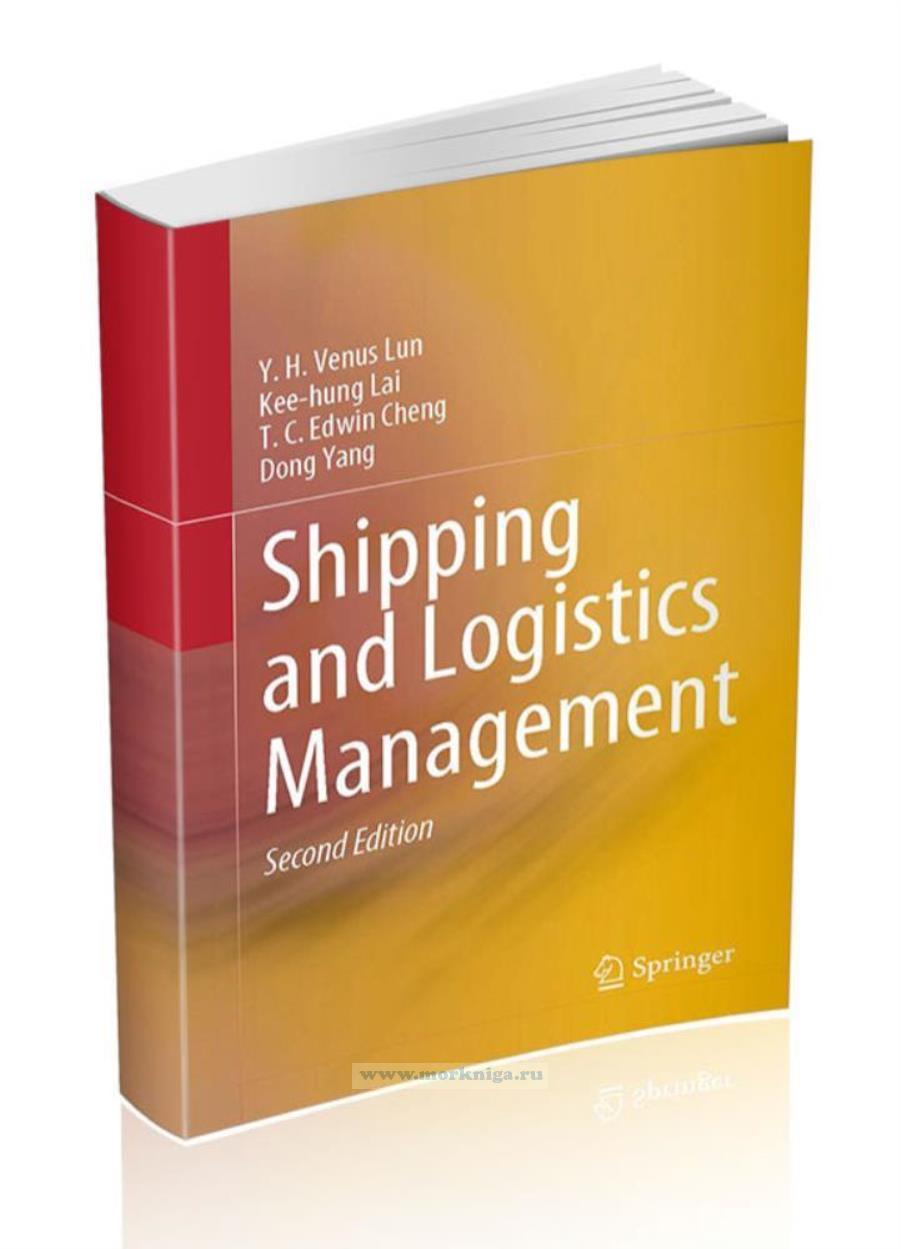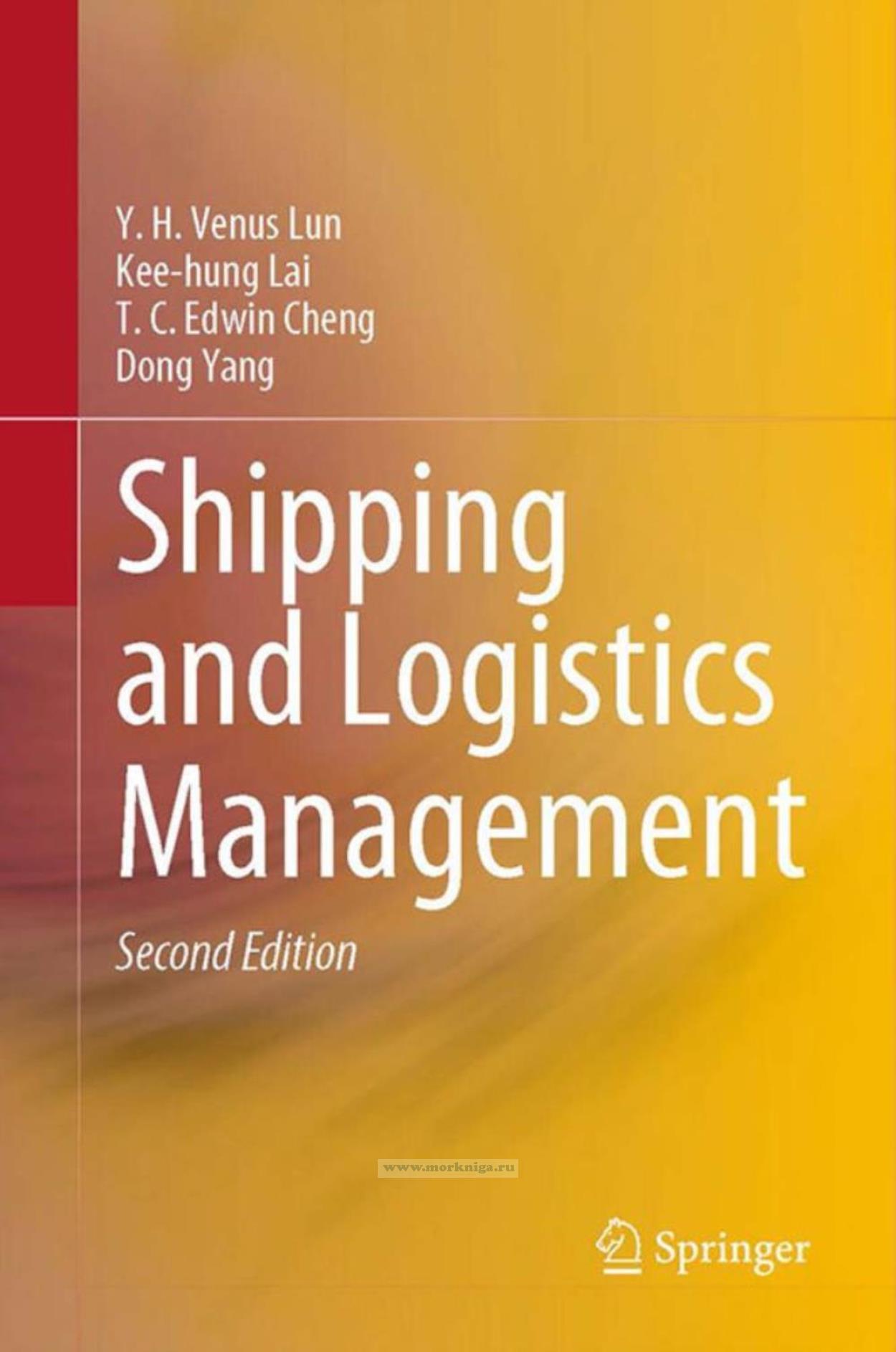Shipping and Logistics Management/Управление транспортной логистикой при морских перевозках
Книга на английском языке.
Explains how the shipping business works, examining the strategic and operational issues that affect the industry.
Consists of the latest data and information from today’s shipping industry.
Includes four new chapters on risk management, shipping security and safety, sustainability, and new technologies.
Contents
Part I Overview of Shipping Business
1International Trade and Shipping
1.1 The Importance of Shipping
1.1.1 Why is There a Demand for Shipping?
1.1.2 What is a Shipping System?
1.1.3 Who Are the Actors in the Shipping Business?
1.2 Freight Market
1.2.1 Tramp Market
1.2.2 Liner Market
1.3 World Economic Development and Shipping
1.4 Sea Transport System
1.4.1 Shipping Intensity
1.4.2 Concept of Parcel Size Distribution
1.5 International Trade Pattern
1.5.1 World Output and World Trade
1.5.2 Overall Seaborne Trade
1.6 International Maritime Passages
1.6.1 The Panama Canal
1.6.2 The Suez Canal
1.6.3 The Strait of Malacca
1.6.4 The Strait of Hormuz
1.6.5 The Strait of Magellan
1.6.6 The Cape of Good Hope
1.6.7 Arctic Sea Route
1.7 Summary
References
2 Freight Rate Mechanism
2.1 Demand for Sea Transport
2.1.1 World Economy
2.1.2 Seaborne Trade
2.1.3 Average Haul
2.1.4 Economic and Political Shocks
2.1.5 Transport Cost
2.1.6 Shipping Demand Curve
2.1.7 Elasticity of Demand
2.2 Supply of Sea Transport
2.2.1 Shipping Supply Curve
2.2.2 Short-Run and Long-Run Shipping Supply
2.2.3 Rigidity of Supply
2.3 The Freight Rate Mechanism
2.4 Shipping Cycle
2.4.1 Characteristics of Shipping Cycles
2.4.2 What Causes the Shipping Cycle?
2.4.3 Overview of Shipping Cycle
2.4.4 Managing the Shipping Cycle
References
3 Bulk Shipping Market
3.1 Introduction
3.2 The Shipping Market
3.2.1 New Buildings
3.2.2 Second-Hand Vessels
3.2.3 Demolition Vessels
3.2.4 Freight Rate
3.2.5 Seaborne Trade
3.3 The Empirical Model
3.4 Determinants of Fleet Size of Bulk Shipping
3.5 The Roles of Freight Rate and Seaborne Trade
Appendix
References
4 Container Shipping Market
4.1 Introduction
4.2 Industrial Organization in Container Shipping
4.3 Capacity Adjustment in the Container Shipping Market
4.3.1 Seaborne Trade
4.3.2 Freight Rate
4.3.3 Capacity Adjustment
4.4 An Empirical Model of the Container Shipping Market
4.5 Determinants of Fleet Size in Container Shipping
4.6 Summary
Appendix
References
Part II Shipping Operations
5 Business Strategy in Shipping
5.1 Introduction
5.2 Strategy for Shipping
5.2.1 Corporate Strategy
5.2.2 Business Strategy
5.2.3 Functional Strategy
5.3 Market Orientation in Shipping
5.3.1 Customer Focus
5.3.2 Competitor Intelligence
5.3.3 Cross-Functional Coordination
5.3.4 Performance Implications
5.4 Operational Effectiveness Versus Competitive Strategy
5.4.1 Variety-Based Positioning
5.4.2 Needs-Based Positioning
5.4.3 Access-Based Positioning
5.5 Development Process of Shipping Strategies
5.5.1 Strategic Analysis
5.5.2 Formulation of Strategies
5.5.3 Implementation and Control
5.6 Structural Options for Shipping Companies
5.6.1 Organic Growth
5.6.2 Acquisitions
5.6.3 Joint Ventures
5.6.4 Alliances
5.6.5 Networks
References
6 Growth of Firms
6.1 Introduction
6.2 Exchange Function
6.3 Vertical Expansion
6.4 Horizontal Expansion
6.5 Growth and Firm Performance
6.6 Summary
References
7 Fleet Mix Decision
7.1 Introduction
7.2 Liner Shipping
7.2.1 Hub-and-Spoke Services
7.2.2 Fleet Mix
7.3 Fleet Mix Decision
7.3.1 Capacity
7.3.2 Ship Size
7.3.3 Number of Ships
7.4The Fleet Mix Model
7.5SCOPE Framework
7.5.1Service Frequency
7.5.2Customer Value
7.5.3Optimal Vessel Size
7.5.4Ports of Call
7.5.5Extensive Market Coverage
7.6Summary
References
8Liner Shipping Network
8.1Introduction
8.2Network-Based Organizations
8.3SMART Driving Forces
8.3.1Strategic Initiative for Performance Gain
8.3.2Market Coverage
8.3.3Additional Business
8.3.4Reduction in Waste
8.3.5Technology Development
8.4SHIPMENT Framework
8.4.1Space Management
8.4.2Hinterland
8.4.3Intermodal Transport
8.4.4Port
8.4.5Management Information Systems
8.4.6Equipment Supply
8.4.7New Agents
8.4.8Terminal Operators
8.5The Case of Maersk Line
8.5.1Space Management
8.5.2 Hinterland
8.5.3 Intermodal Transport
8.5.4 Port
8.5.5 Management Information Systems
8.5.6 Equipment Supply
8.5.7 New Agents
8.5.8 Terminal Operators
8.6 Summary
References
Part III Container Transport
9 Container Transport Chain
9.1 Container Transport
9.2 International Transport
9.3 Primary Customers
9.4 Transport Facilitators
9.5 Transport Operators
9.5.1 Road Operators
9.5.2 Rail Operators
9.5.3 Inland Waterway Operators
9.5.4 Ocean Container Carriers
9.6 Freight Transport Modes
9.6.1 Mode Choice
9.6.2 Modal Combinations
References
10 Intermodal Transport System
10.1 Introduction to Intermodal Transport
10.2 The INTERMODAL Model
10.2.1 Infrastructure
10.2.2 New Technology
10.2.3 Transport Operators
10.2.4 External Business Environment
10.2.5 Regional Location
10.2.6 Management of Containers
10.2.7 Operations of Container Terminals
10.2.8 Deregulation
10.2.9 Availability of Logistics Services
10.2.10 Logistics Security
10.3 Summary
References
11 Managing Empty Containers
11.1 Introduction
11.2 The Container
11.2.1 Stakeholder Participation in Container Interchange
11.2.2 Key Terms in Empty Container Management
11.2.3 Costs of Maintaining Container Equipment Service and Capacity
11.2.4 Types of Containers
11.3 A Conceptual Model of Empty Container Management
11.3.1 Strategic Planning
11.3.2 Procurement of Empty Containers
11.3.3 Movement of Empty Containers
11.3.4 Technical Efficiency
References
12 Container Transport Security
12.1 Container Transport Chain and Container Transport Security
12.2 Container Transport Security Enhancement
12.2.1 Radio-Frequency Identification Technology
12.2.2 Smart Box Initiative
12.2.3 Non-intrusive Inspection
12.2.4 Automatic Identification System
12.3 Diffusion of Technology to Enhance Container Transport Security
12.4 Types of Institutional Isomorphism
12.4.1 Coercion
12.4.2 Mimesis
12.4.3 Norms
12.4.4 Comparison of Normative and Coercive Institutional Isomorphic Processes
12.5 Summary
References
Part IV Port Management
13 Port Operations
13.1 Introduction
13.2 Multiuser and Dedicated Container Terminals
13.3 Terminal Facilities
13.3.1 Quay
13.3.2 Container Yard
13.3.3 Container Freight Station
13.3.4 Interchange Area
13.3.5 Gate Facility
13.3.6 Railhead
13.3.7 Others
13.4 Processes at Container Terminals
13.5 Physical Flows in the Container Transport Chain
13.5.1 Consignment Assembly
13.5.2 Consignment Consolidation
13.5.3 Carriage
13.5.4 Port Handling
References
14 Managing Container Terminals
14.1 Introduction
14.2 Development of Global Container Terminal Operators
14.2.1 Terminal Networks
14.2.2 Regional Coverage
14.2.3 Internationalization
14.3 Performance of Container Terminals
14.4 The PROFIT Framework
14.5 Summary
References
15 Agile Port
15.1 Introduction
15.2 Agility in Ports
15.3 Characteristics of Agile Ports
15.3.1 Infrastructure of Their Own
15.3.2 Commitment from Top Management
15.3.3 Working with Upstream and Downstream Partners
15.3.4 Streamlined Operating Processes
15.4 Implementing the Concept of an Agile Port
15.4.1 Step 1: Management Commitment
15.4.2 Step 2: Process-Improvement Team
15.4.3 Step 3: Setting the Standards
15.4.4 Step 4: Awareness of Staff Members
15.4.5 Step 5: Manager and Supervisor Training
15.4.6 Step 6: Goal Setting
15.4.7 Step 7: Removal of Error
15.4.8 Step 8: Corrective Actions
15.4.9 Step 9: Recognition and Reward
15.4.10 Step 10: Continuous Improvement
15.5 Summary
References
16 Port Development
16.1 Introduction
16.2 The Operating Environment
16.2.1 Containerization
16.2.2 Concentration
16.2.3 Collaboration
16.2.4 Competition
16.3 Port Hinterland and Foreland
16.4 Evolution of a Port
16.4.1 Anyport Model
16.4.2 Development of Shipping Hubs
16.5 Transport Complex Economy
16.6 Summary
References
Part V Contemporary Issues
17 New Technology Development in the Shipping Industry
17.1 Introduction
17.2 Application of New Technologies in the Shipping Industry
17.2.1 Shipping Services
17.2.2 Ship Operations
17.2.3 Port Operations and Development
17.3 Opportunities and Challenges
17.4 Summary
References
18 Sustainability Issues
18.1 Introduction
18.2 Pressures and Practices for Sustainability
18.3 Economic Sustainability
18.4 Environmental Sustainability
18.5 Social Sustainability
18.6 Summary
References
19 Shipping Security and Safety
19.1 Introduction and Background
19.1.1 Definition of Shipping Security and Safety
19.1.2 Development of Shipping Security and Safety Regulations
19.2 International Regulation System
19.2.1 The International Convention for the Safety of Life at Sea (SOLAS)
19.2.2 The International Safety Management (ISM) Code and Port State Control (PSC)
19.2.3 International Ship and Port Facility Security (ISPS) Code
19.2.4 The International Convention on Standards of Training, Certification and Watchkeeping for Seafarers (STCW)
19.3 Standards and Practices
19.3.1 Container Security Initiative (CSI)
19.3.2 Non-intrusive Inspection (NII)
19.3.3 24 Hours Rule
19.3.4 C-TPAT
19.3.5 ISO
19.3.6 UNSCR
19.3.7 Maritime Transportation Security Act (MTSA)
19.3.8 Occupational Health Safety Act (OHSA)
19.3.9 ISO
19.4 Corporate Measures
19.4.1Piracy
19.4.2 Unsafe Ship Operations
19.4.3 Inappropriate Port Operations
19.4.4 Outdated Government Policies
19.5 Summary
References
20 Risk Management
20.1 Introduction
20.2 Risk Concept
20.3 Risk Classification
20.4 Risk Management Approaches
20.5 Risk Management Process
20.6 Risk Management Framework
20.7 Summary
References

